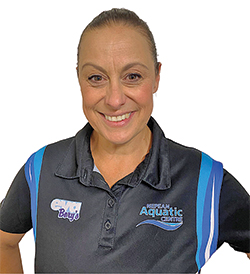 This week I want to highlight bathtime safety.
This week I want to highlight bathtime safety.
With many of us quite time poor, who can blame busy parents from trying to fit as much as possible into a day? Thinking “I’ll just go and grab a towel / hang the washing quickly / answer the door or phone/ go to the toilet / attend to another child / do the dishes” while their child is having a bath. Thinking “I will only be gone for a minute”. Sadly, this is plenty enough time for tragedy to occur.
In Australia, on average, five children under the age of five drown and 47 are hospitalised due to bathtub drowning or near drowning incidents each year. One in four hospitalisations results in permanent injury such as brain damage. The majority of bathtub drowning deaths occur when there is an interruption to the bathing routine such as the doorbell or phone ringing while a parent is bathing a child. Most of the children who drowned in a bathtub in Australia were already in the bathtub when they drowned and were less than two-years-old. 100 per cent of these deaths are due to a lapse in adult supervision. If you must leave the bathroom, please take your child with you.
No one is immune to the dangers of water. I myself once called 000 after a bath time incident. I was right there. I hadn’t even left the bathroom, but I was looking at my other child in the bath and nearly missed seeing my toddler put a container of bath gel mixed with water to his mouth and swig. (How this container got into the bath for my one-year-old to get the lid off, add water and make a soapy soup I will never know).
The shock of tasting the mixture caused my little boy to inhale sharply – causing an unknown amount of water and soap to enter his lungs. It happened so quickly but soon he became very distressed and wheezy and the ambulance was called. Luckily he was given the all clear and settled well, but I watched him closely all night for any signs of secondary drowning (which can occur when water has been taken into the lungs). Secondary drowning is extremely rare, but it is important to have been with your child the entire time they were in the bath to witness any water inhalation which may have occurred.
Older children do not provide adequate supervision, as they may not understand when the younger child is in trouble. Bath seats or bath aids provide support for your child while leaving your hands free to wash them but are no substitute for active adult supervision as they do not prevent children from climbing or falling out of the seat and drowning. Please also remember to drain the bath as soon as bath time is over to remove this water hazard from the home. This also goes for any bodies of water in and around the home such as eskys, wading pools, wheelbarrows, drinks tubs, large pet bowls and anywhere else where water sit in any amount.
‘Kids Alive Do The 5’ have some fantastic videos on their YouTube channel showing parents how to familiarise very young babies with water in the bathtub and shower before they begin formal swimming lessons. I highly recommend that you take a look at these videos if you have an infant, and that swimming lessons are attended from six months of age.
Until next week, please stay SAFER!

